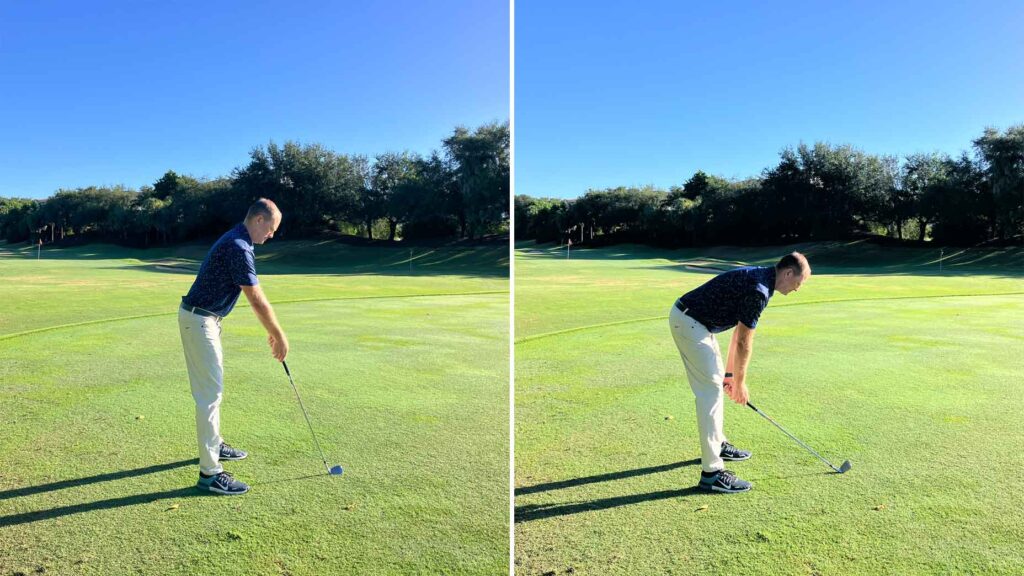Improve Your Ball-Striking: The Importance of Proper Hand Positioning at Address
In the world of golf, achieving consistent ball-striking is crucial for lowering your scores and enhancing your overall game. One common mistake that many golfers make is improper hand positioning at the address. Leading golf instructor Mark Durland highlights how this simple setup error could significantly affect your performance on the course. In this article, we’ll delve into the nuances of hand positioning, the implications of incorrect setups, and actionable tips to help golfers master their address for improved ball-striking.
Understanding the Mechanics of Hand Positioning
At the core of effective golf swings lies the proper positioning of your hands. The term "address" refers to the stance you take before executing a shot. Mark Durland emphasizes that if your hands are incorrectly placed, it can disrupt the entire swing mechanics. This improper setup can lead to a variety of issues, including inconsistent strikes, inaccurate shots, and failure to capitalize on scoring opportunities. Therefore, comprehending the correct mechanics of hand positioning is vital for budding golfers and seasoned players alike.
Impact of Incorrect Hand Positioning
When your hands are not in the right position at address, the chances of making solid contact with the ball dramatically decrease. For example, placing your hands too far forward or too far back can lead to topped shots or thin strikes. These inconsistencies lead to frustration and poor scores on the course. Understanding how your hand position impacts various types of shots—as in drives, mid-irons, and short game approaches—can help you make necessary adjustments and improve your ball’s trajectory and distance.
Key Elements of Ideal Hand Position at Address
To achieve optimal hand positioning, several elements come into play. First, the hands should typically be aligned with the center of your body at address. For longer clubs, such as drivers, ensuring your hands are slightly ahead of the ball can promote a better upward strike. Conversely, for shorter clubs, having the hands more directly over the ball can help in making a solid, downward strike. A fundamental grasp of these key elements will serve as a foundation for your overall setup routine.
Common Mistakes to Avoid
Many golfers fall into traps when it comes to hand positioning. One common mistake is gripping the club too tightly, which can cause tension in the arms and shoulders, ultimately affecting your swing. Another pitfall is incorrect gripping techniques, such as using an improper grip style or finger placement. These mistakes can lead to inconsistency and decreased control over your shots. Durland encourages players to reflect on their current practice and consider what adjustments can be made to avoid these pitfalls.
Practical Tips for Correcting Hand Positioning
To correct your hand positioning and enhance your ball-striking ability, Durland offers several practical tips:
Mirror Practice: Using a mirror can help you visually confirm the position of your hands at address. Standing in front of a mirror can reveal misalignments that you might sense but not clearly see.
Video Analysis: Recording your setup and swing can provide invaluable insights. Reviewing footage allows you to spot inconsistencies and adjust accordingly.
Seek Professional Instruction: Sometimes, understanding the technicalities of your swing is best done with a professional instructor. A trained eye can quickly identify and correct setup mistakes.
- Mind Your Grip Pressure: Ensure that you maintain a light grip on the club. This lighter grip encourages a more fluid and natural swing, leading to better contact with the ball.
Reinforcing Good Habits with Practice
Once you’ve begun to make adjustments to your hand positioning, it’s essential to reinforce these good habits through consistent practice. Integrating drills focused on grip and setup in your practice sessions will help solidify these improvements. Whether on the driving range or practicing short-game techniques, dedicate time to focusing on your hand position to ensure you’re internalizing these adjustments.
The Role of Mental Focus in Golf
While physical adjustments are crucial, the mental aspect of golf cannot be overlooked. Maintaining focus and clear intent behind your setup can enhance your execution. Visualization techniques, which involve imagining the ideal shot before you execute it, can help calm nerves and sharpen your focus. Staying mentally engaged with your hand positioning will lead to more cohesive mechanics during your swing.
Utilizing Your Equipment Effectively
Lastly, remember that different clubs can require different hand positions. Understanding the specifications of your clubs—such as shaft length, lie angle, and grip size—can also impact your setup. By becoming familiar with your equipment and how it relates to your hand positioning, you can fine-tune your address for each club, thus maximizing your chances for success.
Conclusion: Elevating Your Game with Proper Setup
The road to becoming a more accomplished golfer begins with understanding the critical details of your setup, particularly hand positioning at address. By learning the consequences of incorrect setups and implementing simple fixes as suggested by Mark Durland, you have the opportunity to transform your ball-striking ability. With committed practice and effective mental focus, you can ensure that each round brings you closer to mastering your game, ultimately lowering your scores and enriching your overall golfing experience.
Embrace the importance of proper hand positioning, and watch how it transforms your play on the course. Whether you’re a beginner or a seasoned golfer, mastering the fundamentals of address can provide the exponential improvement you’ve been striving to achieve.


